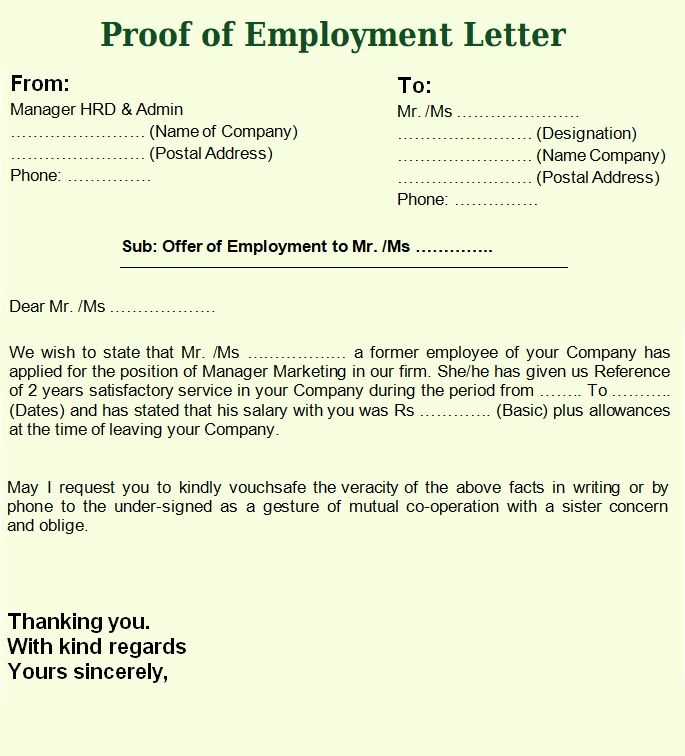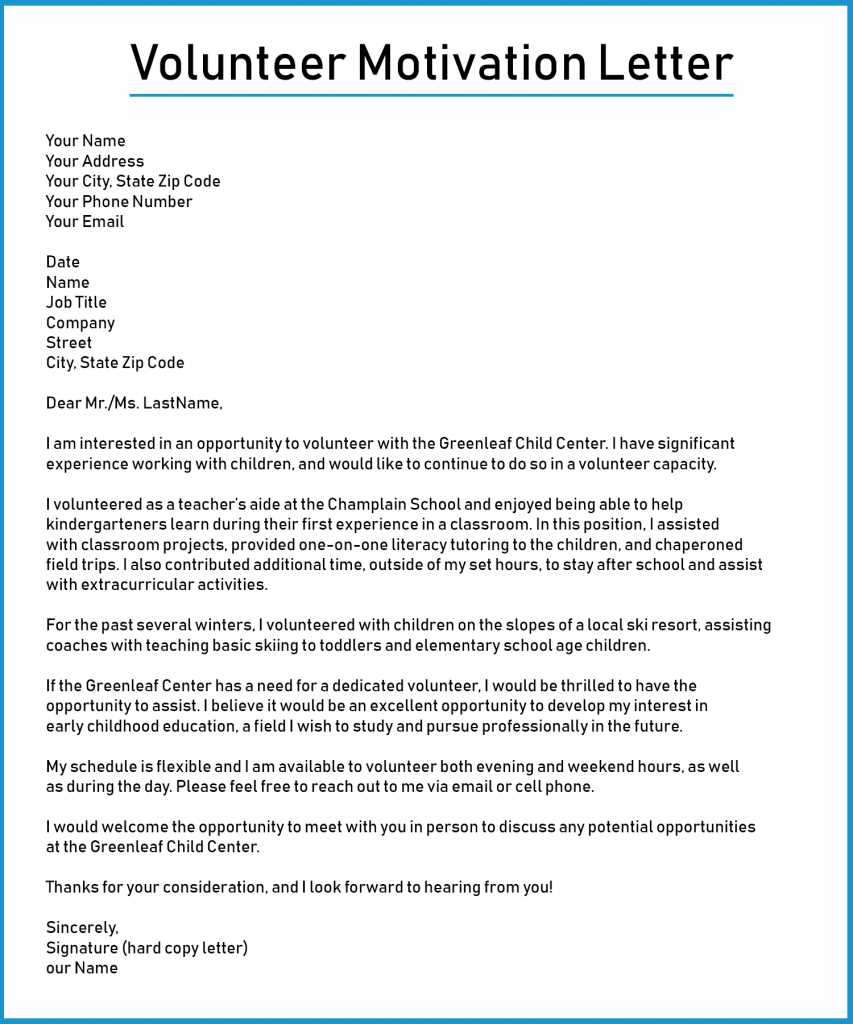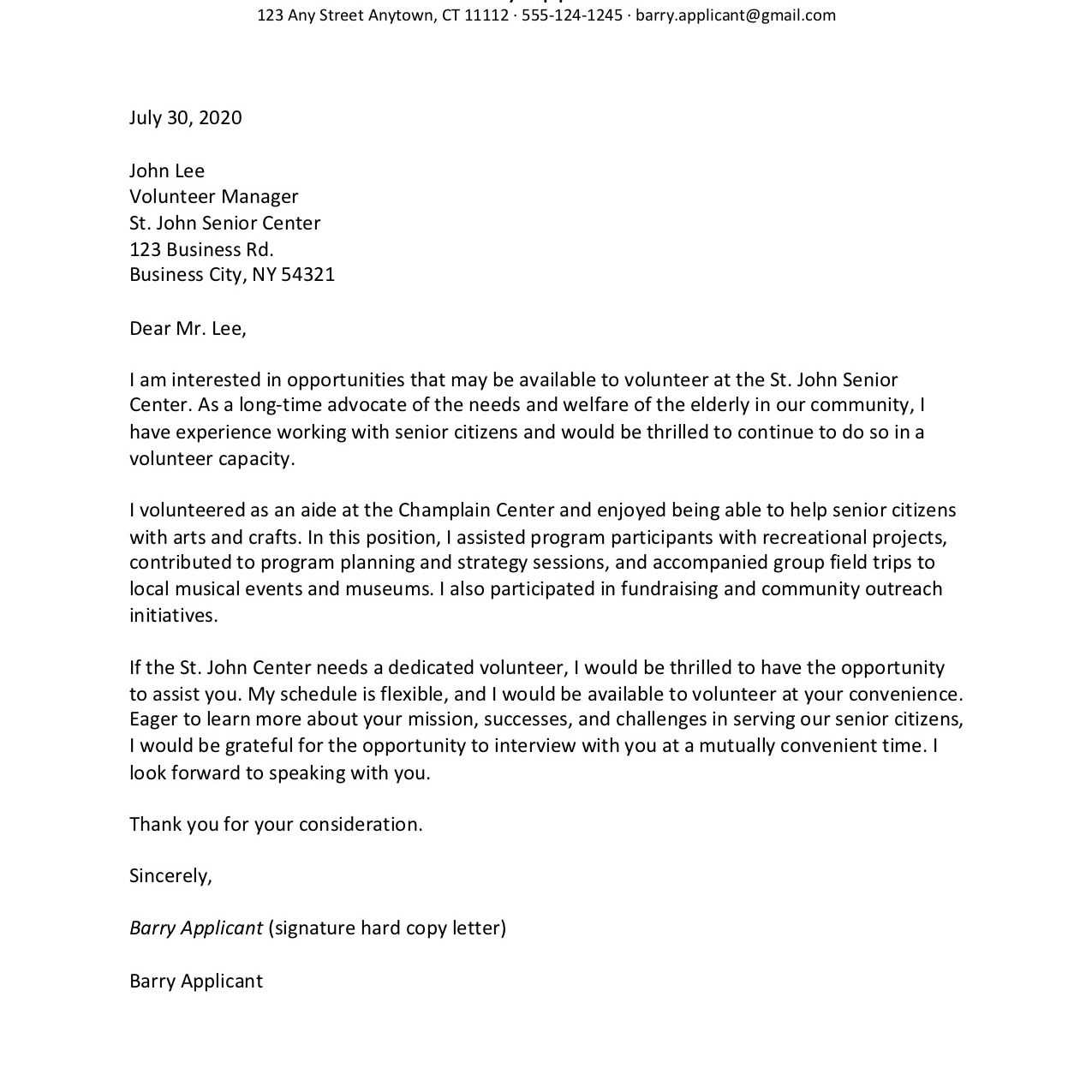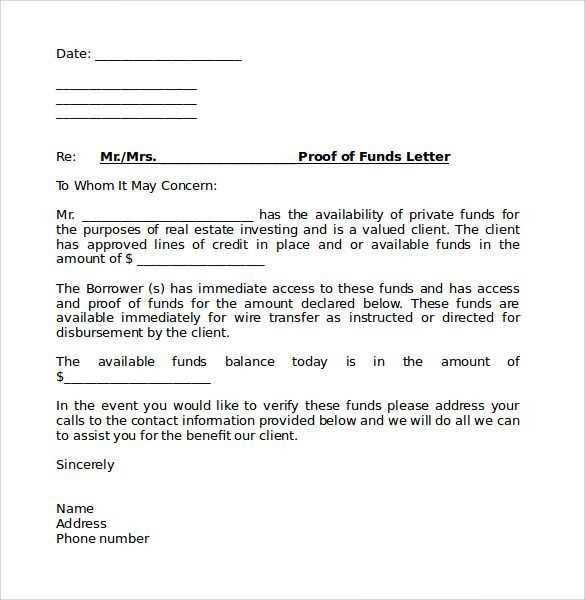Proof of volunteer work letter template

Start by clearly stating the purpose of the letter: confirming the details of the volunteer work performed. Include the volunteer’s full name and the organization they worked with. Be specific about the dates the individual volunteered, including both the start and end dates. This gives the reader a clear idea of the duration of the volunteer service.
Next, describe the volunteer’s role and the tasks they completed. It’s important to detail the work done in a way that highlights the volunteer’s contributions. Whether they helped with events, supported staff, or managed specific projects, outlining the tasks will demonstrate their value to the organization.
Finally, offer a brief statement about the impact the volunteer had. This could include the positive outcomes of their work, their dedication, and how their efforts supported the organization’s mission. A concluding line of appreciation for the volunteer’s time and commitment adds a personal touch and acknowledges their contribution.
Proof of Volunteer Work Letter Template

Include the volunteer’s full name, the organization’s name, and the exact dates of service. Specify the role or position held and outline key duties or tasks performed. Include the total number of hours worked and any special accomplishments. If relevant, mention any skills developed during the volunteer experience.
End the letter with a note of gratitude for the volunteer’s contributions and the impact they had. Provide a contact number or email for any follow-up questions. Ensure the letter is signed by a responsible person in the organization, and use official letterhead for authenticity.
Creating a Clear and Concise Header

A header should immediately communicate the purpose of the document and set a professional tone. Keep it short and direct. Avoid unnecessary details that distract from the main message. Here are a few tips to keep in mind:
- State the purpose clearly: Use phrases like “Proof of Volunteer Service” or “Confirmation of Volunteer Work” instead of vague or overly complex terms.
- Include dates: Specify the time frame of the volunteer work, such as “Service from January 2022 to December 2022.” This provides clear context.
- Use a formal tone: The header should reflect the nature of the document. Use formal language, avoiding casual or overly friendly terms.
- Avoid redundancy: Ensure each word in the header adds value. Eliminate words like “letter,” “document,” or “proof” if they are already implied by the context.
By focusing on these points, the header will give a strong, clear introduction to the content that follows without overwhelming the reader with too much information upfront.
Including Volunteer Details: Role and Hours
Clearly state the volunteer’s role and the hours worked to provide transparency and context. Be specific about the tasks performed and the time commitment. For example, write: “John Doe volunteered as a community organizer from January 2023 to June 2023, dedicating 10 hours each week to coordinating local events and assisting with outreach efforts.”
List the start and end dates of the volunteer service, along with a breakdown of hours worked, if applicable. This helps the recipient understand the extent of the volunteer’s involvement. For instance: “Mary Smith contributed 15 hours per week for a period of 6 months, from March 2024 to August 2024, in assisting with client intake and providing administrative support.”
By providing a detailed account of both the role and the number of hours worked, you create a clear picture of the volunteer’s commitment and contribution to the organization.
Describing Contributions and Achievements
Be specific about the tasks completed and the skills gained during your volunteer work. Mention any leadership roles or special projects you handled, focusing on your direct involvement and impact. Use numbers or percentages when possible to highlight measurable achievements, such as “reduced wait times by 30%” or “organized 5 community events, engaging over 200 participants.”
Quantifying Impact
Include specific outcomes like fundraising goals met, goals exceeded, or increased efficiency. For example, “Coordinated a fundraising campaign that raised $5,000 for local shelter services.” This paints a clearer picture of your contributions and demonstrates the value you brought to the organization.
Demonstrating Leadership and Collaboration
Detail how you worked with others, whether leading a team or collaborating on joint tasks. Provide examples of times when your input led to positive changes. For instance, “Led a group of volunteers to streamline the donation process, cutting down collection time by 15%.” This shows your leadership and teamwork abilities in action.
Using Formal Language and Tone in the Body
When drafting a volunteer work letter, opt for clear, professional language throughout. Address the recipient respectfully, avoiding casual or overly familiar expressions. Be specific in describing the volunteer’s contributions, focusing on actions and results. Avoid vague generalizations and provide measurable details when possible.
Keep the tone neutral and courteous, using polite requests and acknowledgements. Use concise sentences that are direct but not abrupt. Steer clear of emotional language or overly casual expressions like “really enjoyed” or “super helpful,” which may seem less professional.
Consider using a structure similar to the following:
| Type of Statement | Formal Example |
|---|---|
| Volunteer Role Description | “[Name] contributed significantly to the successful organization of the event, overseeing tasks such as coordinating volunteers and managing logistics.” |
| Acknowledging Effort | “We sincerely appreciate the dedication and commitment [Name] demonstrated in supporting the team throughout the project.” |
| Offering Contact | “Please feel free to contact me should you require any further information regarding [Name]’s contributions.” |
By maintaining formal language, you ensure that the letter conveys professionalism while still acknowledging the volunteer’s valuable contribution. Avoid unnecessary embellishments, focusing instead on clarity and respect in each statement.
Adding Contact Information for Verification
Include accurate contact details to allow for verification of your volunteer work. This information will help organizations confirm your involvement and ensure your letter’s authenticity. Here are key elements to consider:
- Name of Supervisor or Organization Representative: Provide the full name of the person who can confirm your work.
- Position or Title: Specify the role of the individual for clarity.
- Email Address: Include the email address for easy communication.
- Phone Number: List a reliable contact number to verify your participation.
- Organization Name: Mention the name of the organization where you volunteered.
Make sure all contact details are up to date, and confirm that the individual or organization is willing to verify your volunteer experience before including their information.
Formatting the Letter for Professional Presentation
Ensure the letter is structured in a clear, readable manner. Begin with your contact details at the top, followed by the date. Next, include the recipient’s name and position, followed by the organization’s name and address. Keep all elements aligned to the left for a neat appearance.
Choosing a Font and Size

Use a professional, easy-to-read font such as Arial or Times New Roman. A font size of 11 or 12 points ensures readability while maintaining a formal tone. Avoid decorative fonts that may distract from the content.
Spacing and Margins
Set the margins to 1 inch on all sides to allow for clear, uncluttered presentation. Use single spacing within paragraphs and a double space between them. This provides enough white space, making the letter more visually appealing and easy to read.
Wrap up the letter with a professional closing, such as “Sincerely” or “Best regards,” followed by your signature and printed name. If applicable, include your position and contact information below your name.